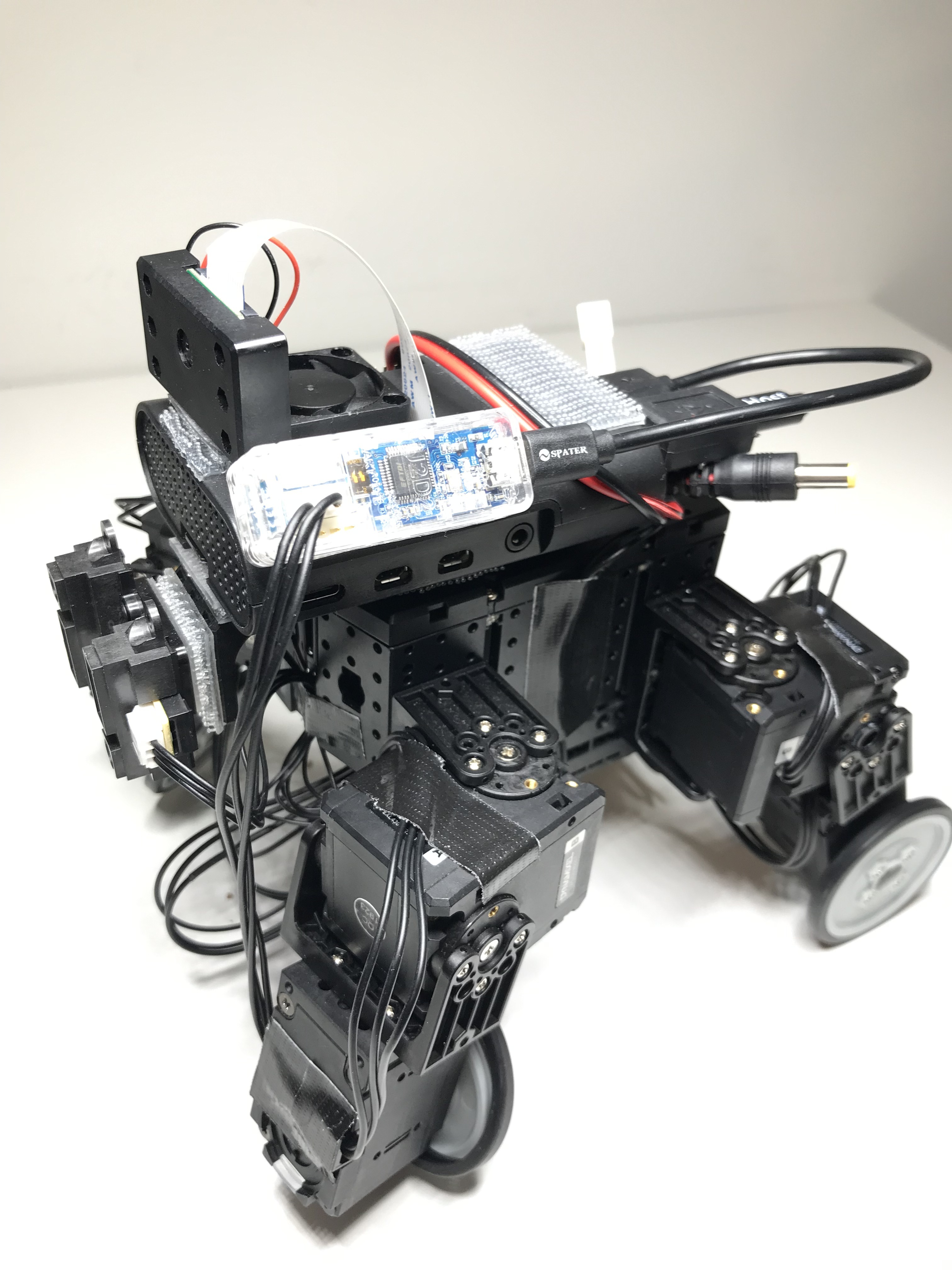@Cory_Smith
Some more options to consider for your situation:
-
Get a more “roomy” case for your RPi such as this one from OONO
https://www.amazon.com/Semi-Enclosed-Enclosure-Raspberry-BeagleBone-Arduino/dp/B08PZCC562 -
If your robot’s dynamic balance is not an issue (like for bipedal walking), and you have room to stick the U2D2 on the outside of your current RPi case, then see picture below for my solution when I had a similar issue:

where I just used 3M Dual-Lock tape https://www.amazon.com/Dual-Reclosable-Fastener-SJ3560-Clear/dp/B07QNMBB28. -
As you are using AX-12s you will need to buy one of these X3P convertible cables
https://www.robotis.us/robot-cable-x3p-180mm-convertible-10pcs/
to connect the U2D2 to your first AX-12, then you can daisy-chain the rest. If needed, this 3P-DXL hub can be handy https://www.robotis.us/3p-extension-pcb/ in case your 3P Dynamixel Cables do not run far enough.